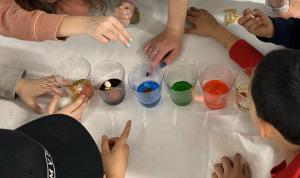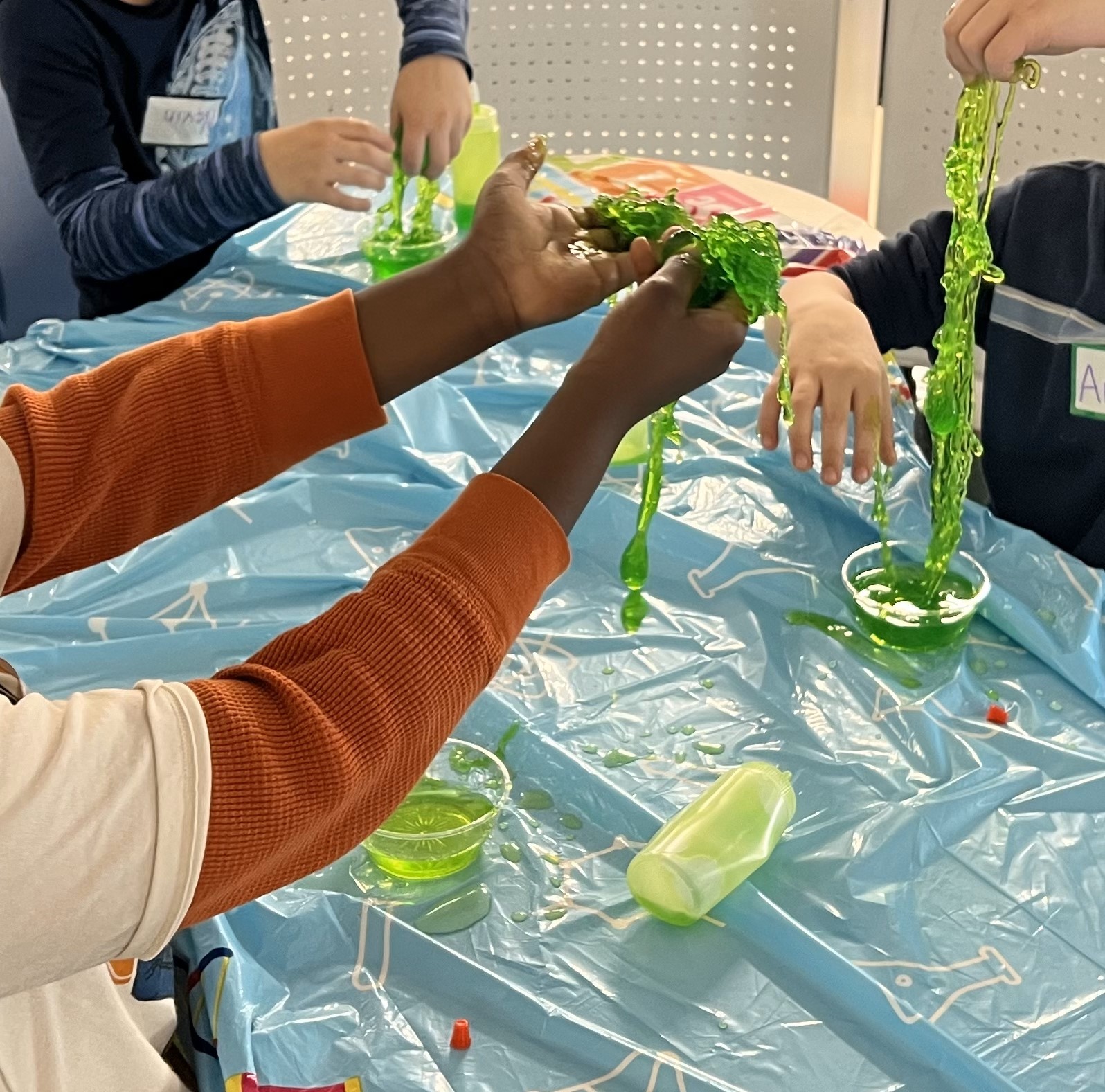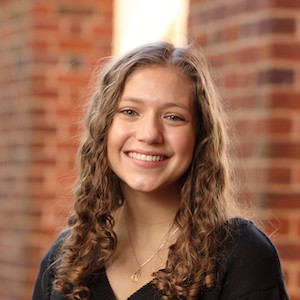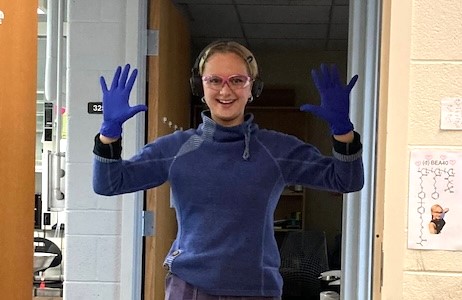
It’s often said that chemical engineering is a difficult major. But even third-graders at Woodbrook Elementary School were able to hook on to some of the big concepts, thanks to University School of Engineering and Applied Science students.
Wahoo Wizards, an outreach club most recently led by fourth-year chemical engineering students Bea Tremblay and Anna Harris, introduced the concepts to children this spring through a new weekly afterschool program.
“We had been reaching out to schools and suggesting Community STEAM Nights and other events that the club has done in the past,” Tremblay said. “Instead, Woodbrook asked if we would be interested in putting a weekly program together, and we were so excited by the idea.”
Creating Magic at Woodbrook
After several weeks of planning, the program took form. Tremblay, Harris and a rotating crew of student volunteers spent an afternoon each week with 22 Woodbrook students, leading interactive lessons with titles such as “Sodium Alginate Snakes,” “Rainbow Column” and “Candy Diffusion.”

The sodium alginate lesson, now a staple of Wahoo Wizards events, teaches students all about polymers.
Polymers such as plastics, rubber and silk form when chemical building blocks called monomers link together in a repeating pattern. They are an area of expertise for both Tremblay and Harris, who worked with polymer membranes in researcher Geoffrey Geise’s lab. Geise is an associate professor of chemical engineering and a strong supporter of the Wahoo Wizards.
Students first created model polymers by hooking together colorful paper clips in a continuous sequence.
They then got to make real-life polymers by pouring sodium alginate into a calcium chloride solution. The reaction between the two liquids “magically” forms a gelatinous solid much like a gummy candy — not as tasty but completely edible, nonetheless.
The children enthusiastically glopped the green gooey strands in various form.
Regardless of whether the Woodbrook students were ready to engineer polymer membranes after their lessons, they were having a great time doing science.

“If things were just not going to plan, we would look at each other and say, ‘at least they’re having fun,’ Harris said. “Even if that was all they took from their experience, that alone makes it worth it.”
Bill Epling, professor of chemical engineering and chair of the department, agreed with Harris’ assessment.
“We know that seeing and learning about science and engineering early influences how students see themselves in science and engineering later,” Epling commented. “The elementary school students had fun at the outreach activities Wahoo Wizards led, they had fun with science and engineering, and they did science and engineering. That will stick with them later when thinking about their possible future paths.”
Graduating Student Leaders
Geise, who was both Harris and Tremblay’s research adviser, said he is not sure how the two managed their rigorous chemical engineering studies, their research in the lab and the weekly outreach commitment.
“Somehow they found a way to navigate, exceedingly successfully, the time demands of an undergraduate chemical engineering education while excelling in research and giving selflessly to their community,” Geise said. “It’s been fantastic to watch both of them become engineering leaders during their time at UVA.”

At its annual Fourth-Year Picnic, the department recognized both Wahoo Wizards members with service awards. Harris won the Chemical Engineering Faculty Award. Tremblay won the Excellence in Leadership Award. They each also took home awards for their research.
The students graduated May 19 with the highest distinction.
Tremblay, from Herndon, Virginia, will continue her research from the Geise Lab during an internship with the National Renewable Energy Laboratory in Golden, Colorado, this summer before starting Ph.D. work in chemical engineering at the University of California, Santa Barbara, in the fall.
Harris, from Canonsburg, Pennsylvania, is using her knowledge of polymer membranes to combat global water scarcity as a full-time chemical engineer at Aquatech.